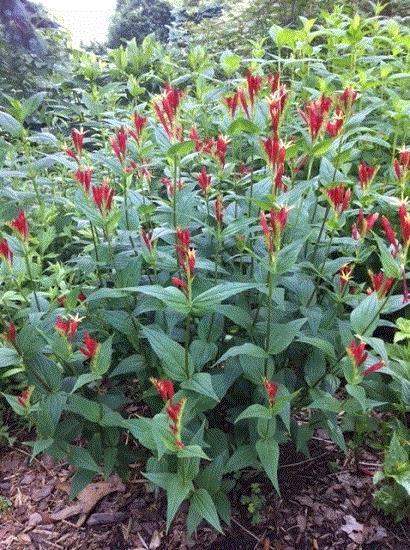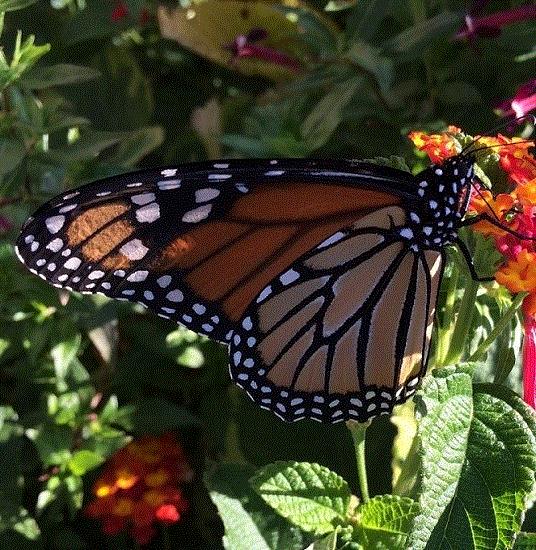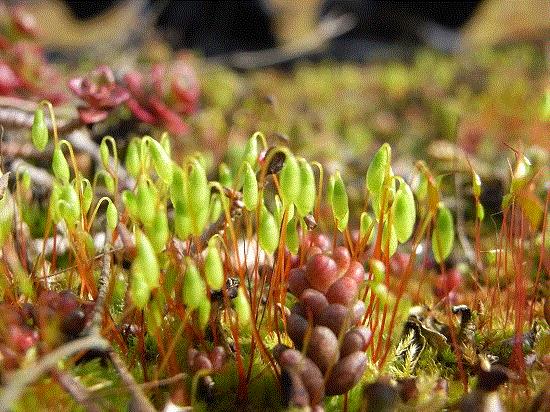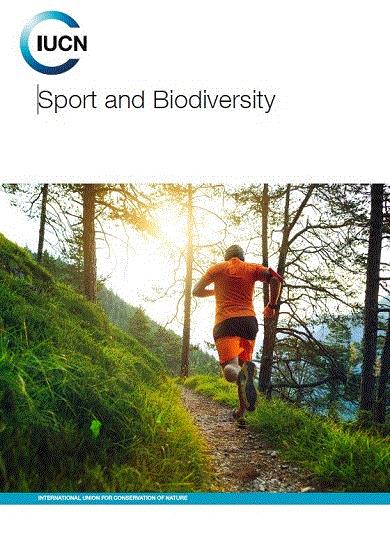Nursery industry's native plant success stories

Spigelia marilandica is a native plant success story. It’s much more common in trade today than just 10 years ago.
My friend Dennis Niemeyer, a conservationist and nurseryman, was involved with native plants before they were really on the nursery industry radar. In the early 1980s, he was involved with We-Du Natives (later known as Meadowbrook Nursery), a mail-order nursery that specialized in natives. He’s been one of the drivers behind the Cullowhee Native Plant Conference, now in its 35th year. More recently, his activities have focused on plant conservation in his home state of North Carolina. With Dennis’ leadership and hard work, the plant conservation system in North Carolina now covers 13,600 acres.
Recently, he delivered the keynote at the NC Invasive Plant Council Annual Symposium, held at the North Carolina Botanic Garden in Chapel Hill. He spoke in part about the future of the nursery industry and invasive plant regulation. Where the nursery industry has been, and where it’s going. Dennis pointed out that the industry has made great sustainability strides in recycling irrigation water, reducing/eliminating stormwater runoff, using biological controls, composting media and plants and using cover crops, among other production practices.
Then, he cited some specific success stories about how the industry has incorporated natives into mainstream production and how that happened. For instance, tissue culture propagation can be credited for the surge in availability of Wisteria frutescens Amethyst Falls. It’s notoriously hard to propagate, not so when using tissue culture. The same with American elm, Ulmus americana, that has now become a top 10 tree in the eastern U.S. due to tissue culture.
He reminded the audience that nurseries are businesses and need to make a profit. That’s why we’re beginning to see eye-candy selections of natives popping up at mass markets. For instance, variegated Cercis canadensis. But, he reminded the audience that plant breeding is also making native varieties more suited to today’s gardens, like the Hydrangea arborescens varieties Wee White and Mini Mauvette, both dwarfs bred by Dr. Tom Ranney, of NC State University. Native Illiciums are another shrub being refashioned and rebranded to make them popular for mass markets. Spigelia marilandica is another success. "Ten years ago, you couldn’t find it in the trade.”
Cultivars of Carpinus caroliniana have raised their visibility for landscape use as,“everyone wants three seasons [of interest].” Other species like Cladastrus kentukea (yellow wood), Nyssa sylvatica (black gum) and Liquidamber styraciflua (sweet gum) are trees “that just 10 to 15 years ago wouldn’t be seen in the market.” Today, native trees are a mainstay of nursery offerings.
The industry has also ramped up to produce pollinator plants “by the millions,” he told the audience.
Dennis cited statistics from Mt. Cuba’s recent plant survey of retail and wholesale nurseries in the Mid-Atlantic that showed that natives comprised 24% of the plant assortment, non-natives made up 74% and invasives or plants on invasive watch lists were at 2%. He pointed out that 25 years ago, the percentage of natives was likely single digits. “Arboretums and zoos were the only ones who wanted them [natives] when I ran We-Du Natives.”
Dennis said that in the future more states may follow the lead of states in the Northeast and Northwest in legislating which plants are prohibited for propagation or sale. He really took note this year when Ohio’s invasive plant law went into effect. When a broadly bipartisan state like Ohio passes invasive plant legislation, that’s a big deal, he said. Dennis described how the Ohio nursery industry worked as a stakeholder in the process of assessing the invasive plant issue and in determining how it would be addressed.
It was a thought-provoking presentation for the audience that reminded everyone that the nursery industry is a stakeholder and important player in invasive plant discussions.
___________________________________________________________________
Native plant demand continues, say landscape architects
People want to do downward-facing dogs in their sustainably-designed backyards featuring native plants or shared outdoor spaces—while their phones are charging nearby. That is one of the possible conclusions of the 2018 Residential Landscape Architecture Trends Survey conducted by the American Society of Landscape Architects (ASLA).
A total of 808 landscape architects rated the expected popularity of a variety of residential outdoor design elements in 2018.
ASLA revised the survey this year to include new types of outdoor amenities that appeal to both single-family and multi-family owners and residents. Residential design is the largest market sector for the landscape architecture profession. Because of the change, flexible outdoor spaces for such activities such as yoga and outdoor movie nights, as well as charging stations for mobile devices, entered the top 10 for the first time.
Top 10 Highest Expected Consumer Demand
-
Native plants (83.3%)
-
Native/adapted drought tolerant plants (83.0%)
-
Low-maintenance landscapes (80.0%)
-
Flexible use space (for yoga, movie night, etc.) (74.2%)
-
Drip/water-efficient irrigation (72.4%)
-
Permeable paving (74.0%)
-
Rain gardens (71.2%)
-
Reduced lawn area (70.8%)
-
Food/vegetable gardens (70.5%)
-
Charging stations (mobile devices) (70.0%)
The top landscape and garden elements are expected to include native plants (83.3%), low-maintenance landscapes (80.0%) and rain gardens (71.2%). In 2017, the top three were native plants (81.6%), low-maintenance landscapes (79.3%) and food/vegetable gardens (76.5%).
The hottest sustainable design elements include native/adapted drought tolerant plants (83.0%), permeable paving (74.0%) and drip/water-efficient irrigation (72.4%). Last year’s top three in this category were almost the same: native/adapted drought tolerant plants (82.3%), permeable paving (76.3%) and reduced lawn area (72.7%).—Excerpted from an ASLA press release.
ASLA Survey: Demand High for Residential Landscapes with Sustainability and Active Living Elements.
________________________________________________________________
Protecting pollinators important to Americans

The National Recreation and Park Association (NRPA) polls Americans on parks issues monthly through their Park Pulse Poll. Their most recent poll asked about pollinator health. Almost 94% of Americans believe that promoting pollinator health (protecting against the decline and death of pollinators) should be a priority. Two-thirds of those polled said they strongly agree or totally agree it’s important. Generations differ in support with Baby Boomers (96%) the strongest, followed by Gen Xers (95%) and Millennials at 91%. Support for pollinators is highest in the West and Northeast. According to a report issued by NRPA, more than 70% of park and rec agencies protect and manage wildlife and wildlife habitat.
Also see: Americans Agree: Promoting Pollinator Health Is Important for an interactive chart to see how pollinator support changes based on demographics.
_________________________________________________________________
How do species that live on green roofs arrive?

Moss on the Royal Holloway green roof. Photo: University of Portsmouth.
While green roofs are seen as being great for biodiversity, adding habitat to what would otherwise be a bare roof, they can be harsh environments with high winds and extremes of temperature that make them vulnerable to drought. Because they are high, they can also be inaccessible to species that can't fly; in particular, soil organisms that are crucial for nutrient cycling and sustainable plant growth.
Yet previous research shows that these species do live on roofs. So, how do they get there?
Dr. Heather Rumble at the University of Portsmouth and Dr. Paul Finch and Professor Alan Gange from Royal Holloway, University of London, set out to learn how soil organisms, such as mites, springtails, bacteria and fungi are introduced to green roofs. Do they arrive via building materials or arrive via other mechanisms, like traveling on birds or in "aerial plankton?"
They monitored a new green roof constructed within the grounds of Royal Holloway from September 2011 to July 2012. Soil microorganisms living in the construction materials (substrates and plant plugs) were monitored to see if they would colonize the green roof.
"We found that while there was a healthy soil community in construction materials, most species died off soon after the roof was constructed due to the harsh conditions. This means that green roof soil species must arrive via another mechanism, such as by hitching lifts on birds or by coming in the aerial plankton," Heather said.
Two important recommendations came from the work. The first is that engineered soils for green roofs need more work to ensure they have the correct physical and biological structure. Ensuring soil biology is adapted to green roofs from the start could make green roofs more sustainable.
The second recommendation is that because most species are currently getting to the roof under their own steam, more research is needed to help the process, perhaps by combining green roofs and living walls to ensure green roofs are connected to ground level soils. —extracted from Species hitch a ride on birds and the wind to join green roof communities by the University of Portsmouth press office.
Green roof soil organisms: Anthropogenic assemblages or natural communities? by Heather Rumble, Paul Finch and Alan C. Gange in Applied Soil Ecology. https://doi.org/10.1016/j.apsoil.2018.01.010
_________________________________________________________________

Phipps’ 2018 Top 10 Sustainable Plants
Phipps Conservatory and Botanical Gardens in Pittsburgh, Pennsylvania, announced their Top 10 Sustainable Plants list for 2018. Criteria include non-invasive growth habit and resistance to disease and insects. Once established, plants should also require little or no additional water or fertilizer. They are as follows:
Trees: Stewartia pseudocamellia and the native Quercus macrocarpa
Shrubs: the native selection Juniperus virginiana Emerald Sentinel, Viburnum carlesii Compactum, the native selection Hydrangea arborescens Annabelle, and the native Lindera benzoin
Perennials (all natives): Agastache Foeniculum, Actaea (formerly Cimicifuga) racemosa, Chelone glabra and Carex pensylvanica.
__________________________________________________________________
NGICP combined training/testing opportunities
Developed by Water Environment Federation (WEF) and D.C. Water, the National Green Infrastructure Certification Program (NGICP) sets national certification standards for green infrastructure construction, inspection, and maintenance workers. WEF will provide two opportunities for combined training/testing for individuals. The first will be in Atlanta, Georgia, from April 30 to May 4 and the second in California (exact location TBA) from June 11 to 15, 2018.
____________________________________________________________________
Green Roofs for Healthy Cities starts Green Infrastructure Week
Green Roofs for Healthy Cities, Toronto, Ontario, has launched the first Green Infrastructure Week in partnership with local and regional organizations that work to preserve and develop green infrastructure. Green Infrastructure Week will be held May 13 to 19 across the Greater Toronto Area and beyond to promote the benefits of green infrastructure and encourage the general public to become part of the conversation about developing better policies to protect and develop green infrastructure.
The Green Infrastructure Week website features a variety of tours and workshops with the Grey to Green Conference in Toronto at its core on May 15 and 16th. The website contains events, resources and actions that citizens can take.
Green Infrastructure Week will serve as a one-stop platform to connect these organizations and their work in their shared mission to conserve, protect and invest in green infrastructure and make it easy for individuals to celebrate, enjoy, learn and take action.
____________________________________________________________________

How biodiversity can be a priority for the Olympics

The International Olympics Committee (IOC) has been working closely with the International Union for the Conservation of Nature (IUCN) for the past two years to make biodiversity a priority. The new guide is a tangible outcome resulting from the IOC’s Sustainability Strategy, which maps out a detailed action plan to address specific recommendations of Olympic Agenda 2020, the IOC’s strategic roadmap.
“It provides an excellent overview of the synergies between sport and biodiversity and is a valuable complement to our own Sustainability Strategy arising from Olympic Agenda 2020,” said Christophe de Kepper, Director General of the IOC.
The Sport and Biodiversity guide offers practical advice and specific examples of how sports can make a positive contribution to nature including preserving green spaces, enhancing natural habitats in urban environments, sharing biodiversity data collected during the development of sports venues and supporting carbon offset projects that also generate biodiversity benefits.
Excerpted from New IUCN guide sets out biodiversity roadmap for sports community, an IOC press release.
___________________________________________________________________

Worth reading

Best,

Debbie Hamrick
NewTerrain
This email was received by 18,738 readers.
If you're interested in advertising in NewTerrain, contact Kim Brown.